The plan this morning was to go to La Loberia Beach as we had a free morning, but when we got up it was wet and drizzly outside. So we decided to have a leisurely breakfast and see how things went. A little friend joined us at the breakfast table looking for crumbs.

By the time we finished breakfast the weather hadn’t improved that much so we made a decision to go shopping instead of to the beach. As we made our way into town we saw sealion just lying on somebodies front porch.
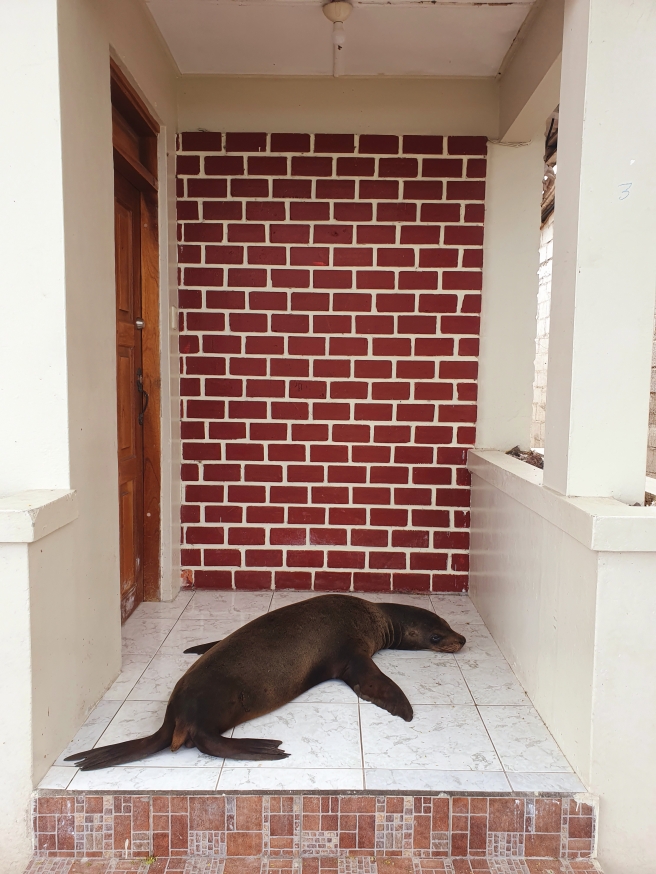
We ambled down the main street, popping into almost every single shop and made a few purchases such as shot glasses, jewellery, t-shirts etc. It was quite relaxing and the best thing to do when the weather wasn’t so good.
We also took some photos by the massive San Cristobal sign.

After our shopping trip we went back to the hotel and then we were met by Nico who was our guide for the Highland tour in the afternoon. We set off all together in a taxi and our first stop was the Casa del Ceibo. This was a 300 year old ceiba tree with a tree house halfway up.
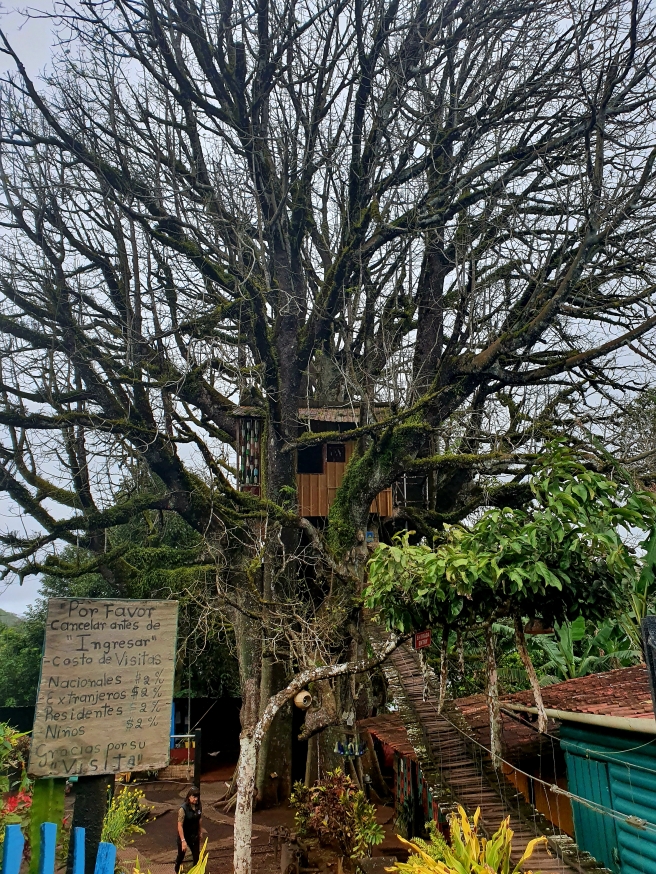
You can actually hire the tree house and spend the night here if you fancy it. However, there’s no covering to the windows so you would need to wrap up warm.
We walked over the rope bridge to the tree house and explored inside – it actually had everything you needed for a night’s stay including a shower and toilet. Normally you can leave the tree house by sliding down the pole on the side but because it was raining and the pole was wet we weren’t allowed to do this in case it was too slippery.
At the bottom of the tree is another entrance to the ‘downstairs’. This is just a dark space that looks a bit like a dungeon and feels a bit creepy.
Because of the success of the tree house the owners have now built a boat house in the trees which is also available to stay in.
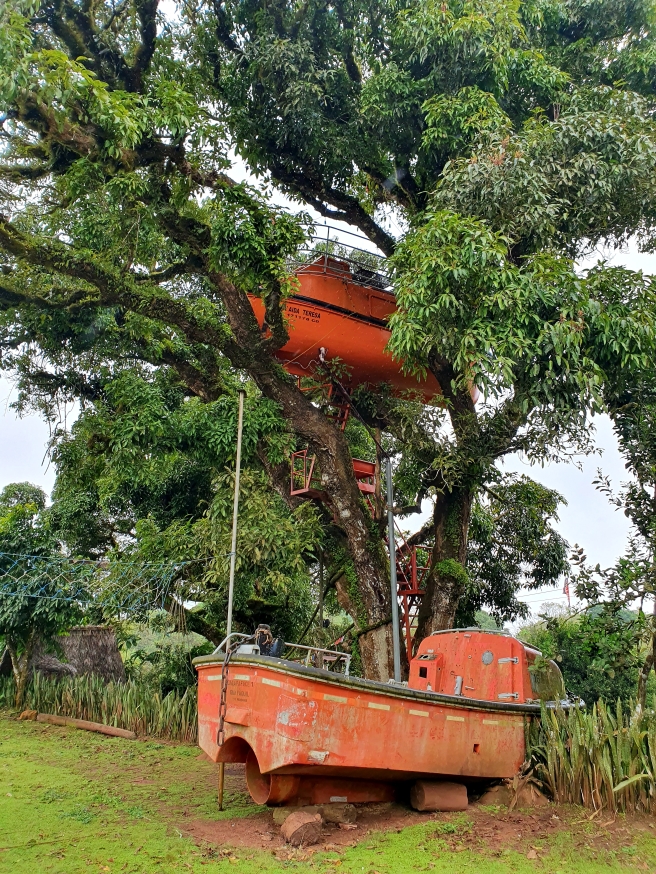
Following our clambers up, down and in the tree we got back in the taxi and headed to El Junco Lagoon. On the way we went through the town of El Progreso. Back in 1891 Manuel J Cobos started to develop a sugar cane factory in the area. He recruited jailed mainlanders to come and work in the factory and he also minted his own money called the cobo. This all went really well until 1904 when Cobos was stoned to death when his workers revolted. His son took over but was not particularly successful and El Progresso is now just a small village. Cobos had a number of illegitimate children and the current mayor is a descendant of the original J Cobos.
After a little while we cam to the start of the trail leading to El Junco lagoon. El Junco is formed from a cinder volcano which is a volcano made of ash. The ash forms impermeable layers when it gets wet and forms the lagoon. Junco is a type of weed that grows in the area.

As we walked up the path in the drizzle we saw a few tree finches. The male finches are black and the females are grey. We also saw a Galapagos fly-catcher and these birds are very territorial, so he was very protective of his little area.
One of the main plants growing in this area is the Miconia plant which can only grow at altitudes of 500m. This plant comes from the cacao plant family.
As we walked up the steps to the top of the lagoon, Nico spotted a rat on the path. He kicked it really hard, it ricocheted off one of the steps, shook itself and ran off into the undergrowth. It was so funny to watch, and as rats are an invasive species, nobody on the Galapagos islands really like them and try to kill them.
We were lucky to spot a ting warbler finch in the bushes. This si a really small finch and weighs less than 2g.
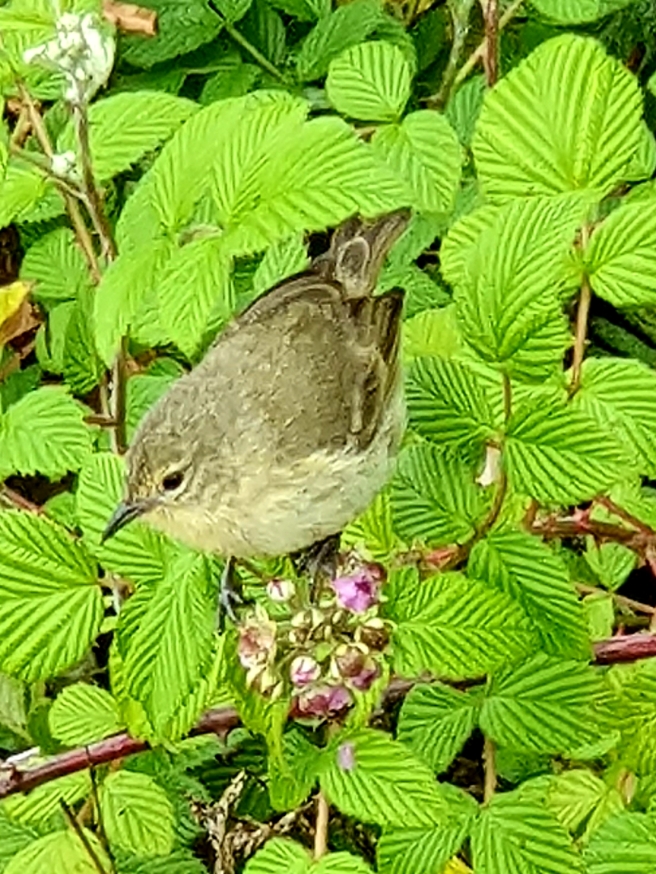
The area around El Junco is wet and humid at least 50% of the time. It was really misty at the top and we couldn’t really see the freshwater lagoon, just the outline of it.

Normally we would’ve walked around the perimeter of the lagoon but as there was very little to see in the rain we decided to head back down.

Our next stop was Galapaguera which is a place where giant tortoises live in semi-natural conditions.
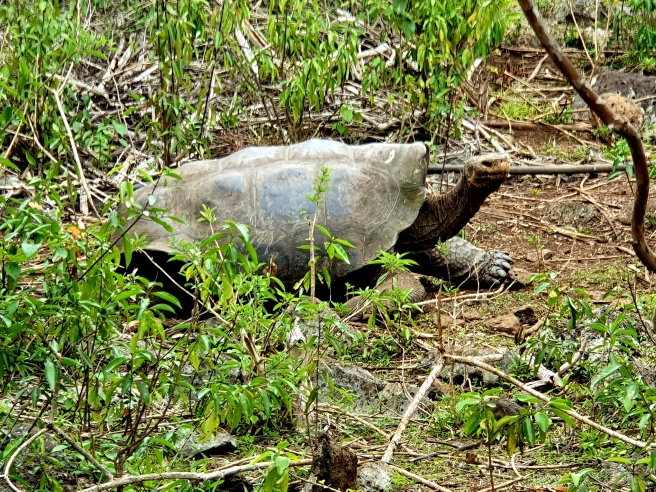
There are over 800 tortoises in the centre. The tortoises have their vocal cords but don’t make many noises, except the male grunts like a cow when mating. The females fight off the males because they only want to mate with a strong male who can over power them. The tortoises here are slightly smaller than they would be in the wild due to the fact that they are in a smaller space.
We saw lots of baby tortoise and they were tiny. The ones in the photos below are less than a year old.
The young tortoises are kept in pens until they are around 4 years old after which time they are moved to larger outside pens until they are 8. After this they can be released back into the wild. The numbers on their shells relate to their order of hatching. The sex of the baby tortoise is determined by where they are in the nest – the male eggs are lower down and the female eggs are on top. The baby tortoises weigh around 27g when they hatch and they remain inside the nest for 30 days. The reason for this is that when they hatch they have an open wound on their abdomen so this needs to heal up. The tortoises lay 4-10 eggs and can continue to reproduce until they die.
As they age the shell of the tortoises grow with them so they develop more rings on the shell.
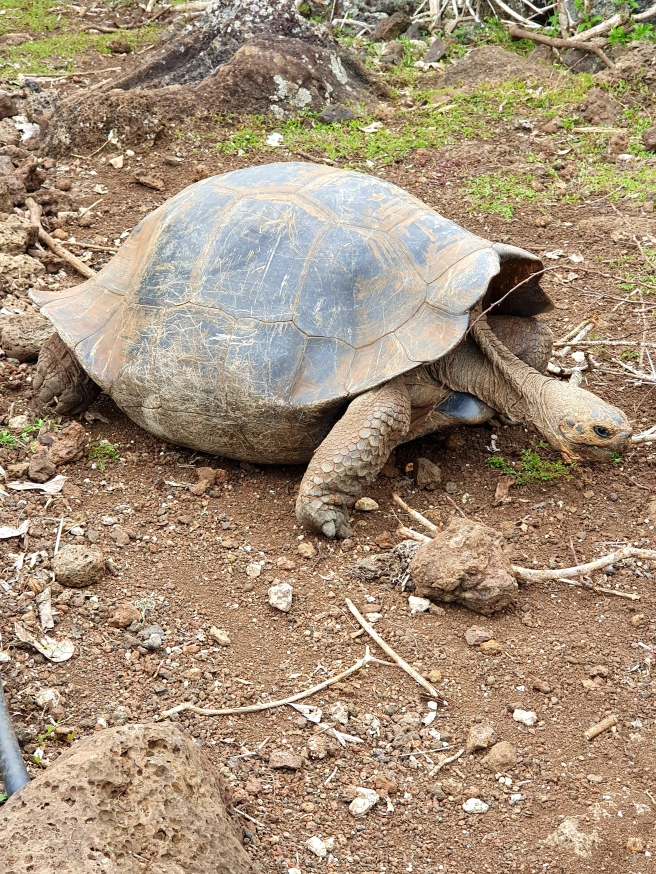
On average a tortoise covers around 500m and this increases during the mating season. They only mate once a year. There are two different populations of tortoises in San Cristobal and they come from the same genetic pool. Scientists are currently exploring if the two populations are different species and how.
One of the main trees in the tortoise centre was a poison apple tree and the sap from these trees can cause a severe rash.

On the way out we spotted a yellow crowned heron. The one in the photo is a juvenile. These birds are scavengers and can eat the baby tortoises.

Our final stop was Puerto Chino.

This is a lovey beach area, and had the weather been better we might have gone for a dip. The cacti on the way down, like many on the Galapagos islands were like trees. The spines at the bottom of the cactus are really tough and very sharp, whereas those at the top are a lot softer.

We saw a small medium beak ground finch by the side of the path too.

Once we got to the beach there were several sealions. The alpha male had an altercation with a younger male, but the younger male backed off so it didn’t lead to anything.

Over the years the sealions have got slightly smaller as this means that they have less also leaner and have skin to be exposed to the heat so they are able to cool down easier. They are also leaner and have less fat than previously. The male sealions stay in their colonies until they are around 7 years old, after which they leave to form a bachelor colony. Here they eat as much as possible to build up their strength and then challenge an alpha male. They stay as an alpha male for around 2-3 years.
Sealions still have 5 digits on each fin and 3 of these also have nails on them.
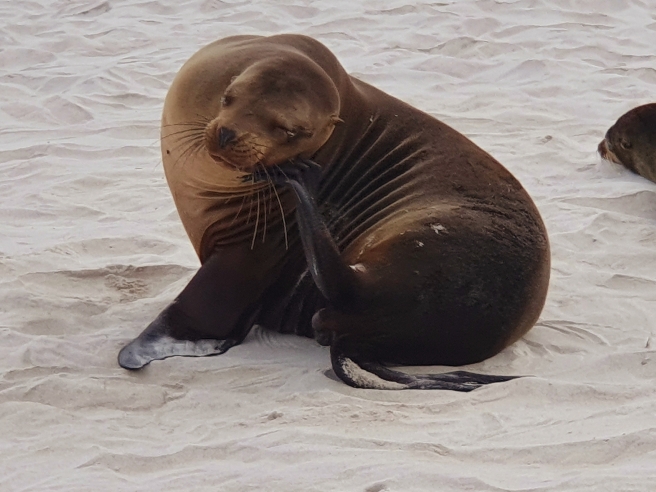
The male sealions have a bump on their head which is formed from bone and gets bigger as they grow. This identifies the males from the females and they also use it when they fight each other. Sealions sweat oil from their skin and this helps to reduce friction when they walk along. Sealions have muscles which can close their nostrils which helps them to equalise pressure in their ears when they dive.
Nico told us a hilarious story about a sealion in his boat. He used to have a small boat and at one point when he went out to his boat there was a male sealion in it. The sealion had been living there for quite a while and had deposited his waste material at one end of the boat. Nico started to clean it all up with water and try and chase the sealion off the boat. As he was cleaning the boat another boat went past causing a wave in the water which made Nico fall over – straight into the shitty water! He was not happy! He managed to get the sealion off eventually and clear up all the mess!
On the way back to the taxi we saw a little hermit crab -there are two species of hermit crabs in the Galapagos islands.
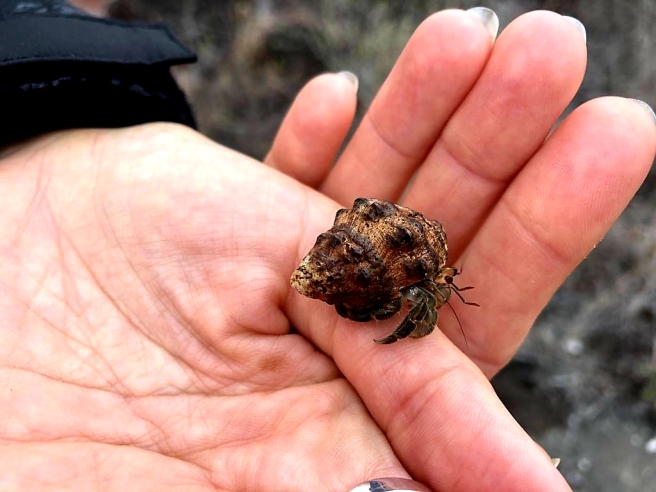
Once back at the hotel we got warmed up and then went into town for a cocktail at Muju’s overlooking the sea.
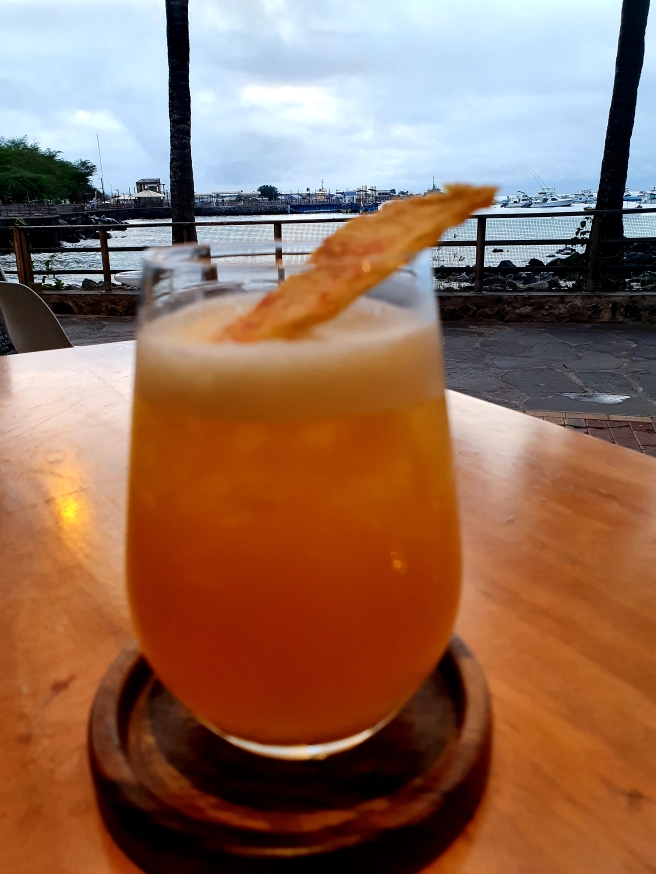
For dinner we went to El Cranrejo Loco – where I had red crab which was delicious. It came with a hammer and chopping board as I had to hammer the crabs open to get to the meat! We took the shells of the crab and some meat with us when we left to leave in the trees for the wild cats.
On the way home we stopped and played with a little tabby cat near our hotel.
















